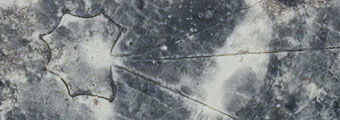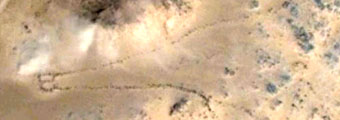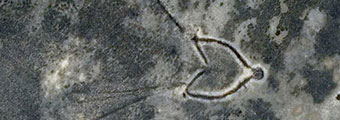DESERT KITES
In the 1920s, British military pilots were the first to spot these strange shapes from above while flying over the Jordanian desert. Because their shapes resembled children's kites held on strings, they gave them the name Desert Kites.
Desert Kites are large constructions that consist of two long walls converging upon an enclosed space that has on its periphery small stone constructions called cells. For a long time, researchers were not sure what these strange formations were all about. Since the cells are clearly pitfalls, it is now agreed that they were trapping systems for large herds of wild animals.
If you want to know more, I recommend the articles of Olivier Barge,
to whom I owe my knowledge of these artifacts from many emails:
Researchgate.net | Academia.edu
to whom I owe my knowledge of these artifacts from many emails:
Researchgate.net | Academia.edu
General information on kites: World History Encyclopedia
Inventory and distribution: Desert Kites et constructions apparentées
To date, around 5,000 of them have been discovered in the Middle East alone. This was made possible by high resolution satellite images from Google Earth and Bing Maps, which became generally available from 2010. Since then, similar structures have also come to light in Armenia and in Central Asia, east of the Caspian Sea. As of 2018, this is also how the first kite-like animal traps were found in the Sahara, which until then had been believed to be kite-free.
Since desert kites have only recently come to the attention of archaeologists, very little is known about them. Dates are still rare, but the oldest date back to around 8,000 BC, while there are indications that they were used until recent times. The kites in Central Asia may even have been in use until the 19th century.







